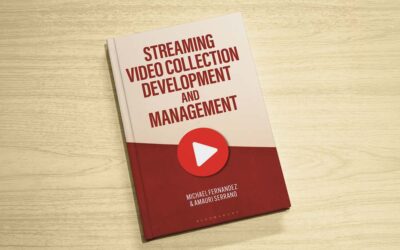Instruction in Special Libraries: Technology Integration Matrix Overview
Lauren Hays
In a previous post, I covered the TPACK instructional model. TPACK has been very useful for me, but it is not the only model that I use when designing instruction or working with others to design instruction.
Another model I frequently use is the Technology Integration Matrix. While the language used in the matrix is focused on students and teachers, I encourage you to reframe the language to fit your learning environment. Instead of students and teachers, use learners and librarian, library users and trainer, or whatever words fit for you.
The Technology Integration Matrix “provides a framework for describing and targeting the use of technology to enhance learning. The TIM incorporates five interdependent characteristics of meaningful learning environments: active, collaborative, constructive, authentic, and goal-directed. These characteristics are associated with five levels of technology integration: entry, adoption, adaptation, infusion, and transformation.”
The matrix, which can be seen here (https://fcit.usf.edu/matrix/matrix/), helps instructors be purposeful in their integration of technology in instructional settings.
Let’s consider some examples of how you could use the Technology Integration Matrix in your instructional settings:
- You have been leading a workshop on databases. The session is primarily a lecture and demonstration. You would like to make the session more interactive and have the attendees engage in a couple activities. Looking at the Technology Integration Matrix, you decide that the row Active best fits your need for more interactivity. Then, you look at each column. You know you are already doing Entry and Adoption, so decide to focus on Adaptation. You select a few technology tools (i.e. databases) and create specific activities for the attendees to engage in during the session. This helps attendees gain familiarity and confidence with the databases.
- You have been teaching a session on systematic reviews. This session is primarily lecture, but you do have a few activities built into the session where attendees analyze systematic reviews. Most of the analysis occurs individually, but you also have one activity that is collaborative. This has been a paper-based activity, but you would like to move it online to save paper. You also feel that the collaborative analysis should be done online because many attendees work across the building and do not collaborate in-person. You review the Technology Integration Matrix and decide your goal fits in the Collaborative row and then fits in both the Adaptation and Infusion columns. It fits in the Adaptation column because you will suggest a few tools for collaborative analysis (e.g hypothes.is and Google Docs), but you also explain how collaboratively analyzing systematic reviews can be beneficial and you suggest that attendees find a tool that works best for them.
For me, the reason the matrix is helpful is because it helps me categorize and name what I am doing and where I want to go with technology in my instructional sessions. Being able to step back and reflect is a necessary part of instruction.
Lauren Hays
Lauren Hays, PhD, is an Assistant Professor of Instructional Technology at the University of Central Missouri, and a frequent presenter on topics related to libraries and librarianship. Her expertise includes information literacy, educational technology, library and information science education, teacher identity, and academic development. Please read Lauren’s other posts about skills relevant to special librarians who provide instruction. And take a look at Lucidea’s powerful integrated library systems, SydneyEnterprise, and GeniePlus, used daily by innovative special librarians in libraries of all types, sizes and budgets.
Never miss another post. Subscribe today!
Similar Posts
Growing Your Leadership Skills: 7 Tips for Special Librarians
Great library leaders aren’t born—they’re made through learning self-reflection and practice. Here are seven strategies to help you grow and lead with impact.
Keeping Up with Copyright and Generative AI: What Special Librarians Need to Know
As generative AI becomes more prevalent copyright law is evolving to address its impact. A new report from the U.S. Copyright Office provides guidance on what is (and isn’t) copyrightable.
Understanding Shadow AI: Risks Costs and Governance
AI can enhance search discovery and efficiency but unsanctioned adoption—known as “shadow AI”—can lead to budget overruns and compliance risks. Here’s how to evaluate AI pricing models and build a governance strategy that balances innovation with cost control.
Interview with an Author: Fernandez on Streaming Video Collection Development
As demand for streaming video in libraries grows so do the challenges of managing access budgets and licensing. Co-author Michael Fernandez shares key insights from his book “Streaming Video Collection Development and Management”.






Leave a Comment
Comments are reviewed and must adhere to our comments policy.
0 Comments